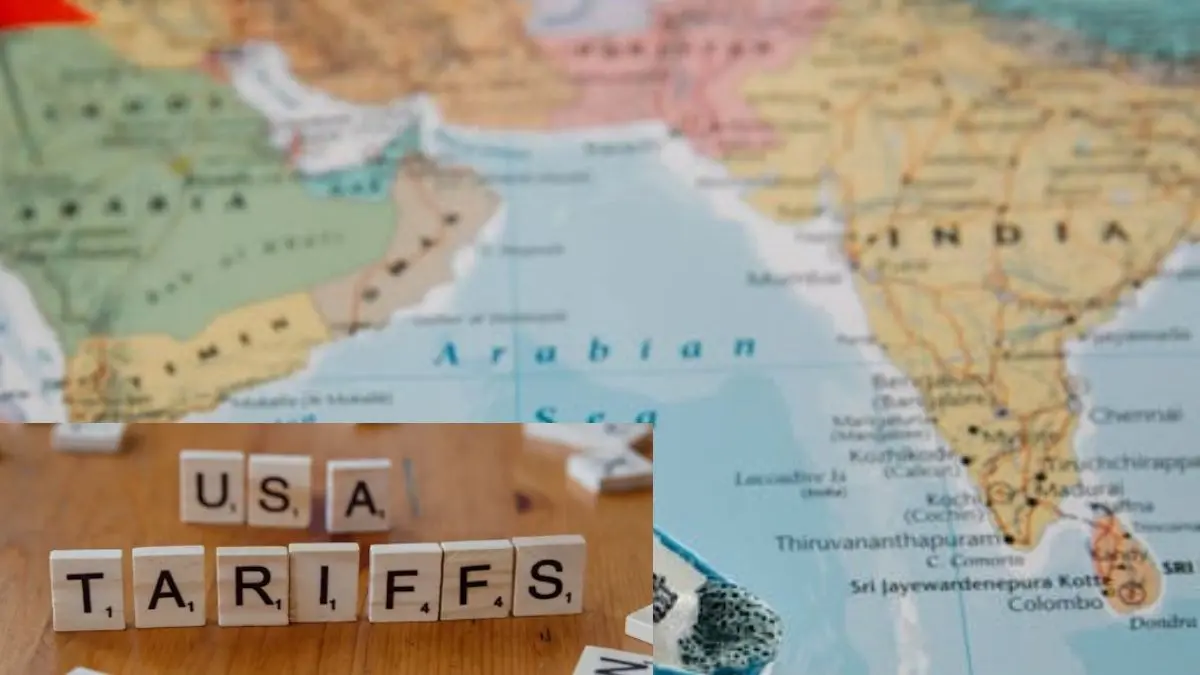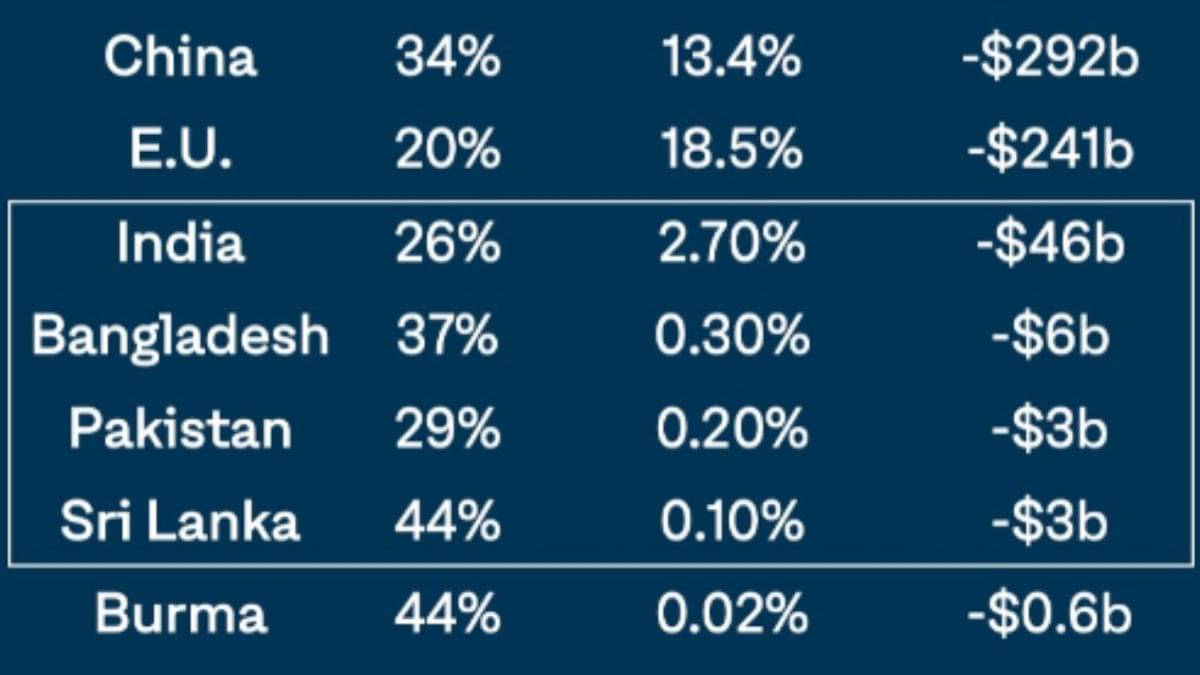Updated April 3rd 2025, 13:43 IST
War, And Now Tariffs: Double Trouble For These Countries, Pakistan Included
The tit-for-tat tariffs placed by the U.S. on Bangladesh, Pakistan, and Sri Lanka affect major export-oriented industries, most notably textile and apparel.

On April 2, 2025, U.S. President Donald Trump announced sweeping tariffs, including a 10% base on all imports and additional rates for particular countries. This move has produced mixed responses in global financial markets, especially in South Asia.
“President Trump refuses to let the U.S. be taken advantage of and believes that tariffs are necessary to ensure fair trade, protect American workers, and reduce the trade deficit — this is an emergency,” the press release read.
Additionally, the report criticized India's 'burdensome and/or duplicative testing and certification requirements' for medical equipment, telecom goods, and chemicals, which make it challenging for American businesses.
India: Market Decline Amid Tariff Exemptions
India was also called out in the press release. India levies 10–20% tariffs on networking switches and routers, while the United States does not. India charges 80% for rice in the husk, compared to 2.7% in the United States. Apple products are duty-free in the United States but subject to a 50% levy in India.
India's exports to America are subjected to a 26% duty rate, which is lower than other Asian countries like China (34%) and Vietnam (46%). Even this did not see Indian share markets dip modestly. The Nifty 50 dipped 0.2% to 23,285.6, while the BSE Sensex dropped 0.27% to 76,410.8.
Pharma stocks jumped, with the Nifty Pharma index climbing 2.6%, headed by Dr Reddy's and Gland Pharma, which increased 6% and 12%, respectively. This increase is due to the exclusion of pharmaceutical products from the new tariffs.

Bangladesh, Pakistan , and Sri Lanka: Expected Consequences
The tit-for-tat tariffs placed by the U.S. on Bangladesh, Pakistan, and Sri Lanka affect major export-oriented industries, most notably textile and apparel. Bangladesh will have a 37% tariff, affecting its $6 billion trade deficit with the U.S., where garment is its prime export.
Pakistan, with a 29% tariff and a $3 billion trade deficit, will have its textile, leather, and surgical instrument exports affected. Sri Lanka, with the highest tariff of 44%, also carries a $3 billion trade deficit, and its apparel and tea exports will be hit hardest. Such higher tariffs could test the economic stability and competitiveness of these countries in the U.S. market.
Global Market Volatility
The announcement of tariffs has caused high volatility in global markets. U.S. stock futures fell, with the S&P 500 plummeting more than 3%. Asian markets also responded negatively; for example, Japan's Nikkei index plunged sharply. Investors are worried about possible inflation and a reduction in economic growth due to rising trade tensions.
“Today’s action simply asks other countries to treat us like we treat them,” the press release noted.
Published April 3rd 2025, 11:34 IST
